Category: Resident care
Posted by Dr. El - February 15, 2018 - Business Strategies, Customer service, Inspiration, McKnight's Long-Term Care News, Resident care, Tips for gifts, visits

Here’s my latest article on McKnight’s Long-Term Care News:

Last week, I attended an accessible design symposium at the Cooper Hewitt Museum in New York City to see what ideas I could use with elders in long-term care. Through listening to the symposium speakers, reading descriptions of works featured in the student design contest and viewing the Access+Ability exhibit, I found more than I had expected.
Crash course in accessible design
I suspect I’m not the only McKnight’s reader with a lack of knowledge about accessible design — even though we work with elders with abilities that are typically different than those of younger adults.
Patricia Moore, introduced as “the mother of universal design,” told the audience that her elderly grandparents inspired her work. They struggled to maintain their independence in a world that made it difficult for them. “Grandma wasn’t broken,” she said. “The tools we gave her were inadequate.”
In my crash course in accessibility, I learned that objects can be designed in ways that increase the mismatch between our bodies and the environment or, in accessible design, to intentionally decrease that mismatch. For example, the standard design of a walking cane allows it to fall to the floor, making it difficult to retrieve for someone with mobility problems. In the Cooper Hewitt exhibit, I saw canes that stayed upright when not in use.
Another speaker discussed how “designing for disability” very often results in products that are good for everyone, such as books on tape, height adjustable desks or ramps for building access that are used by parents pushing strollers and travelers with rolling suitcases, in addition to those with walkers or wheelchairs.
Nothing about us without us
There was a small, vocal group of disability activists present. When I entered the symposium I was handed a card from their organization that read, “Nothing about us … without us.” They echoed the sentiment of the speakers that increasing the diversity of people designing products and systems results in products and systems that work better for a larger number of people.
Including elders and direct care staff in more of the decisions that affect them within our organizations is likely to result in better decisions.
For the entire article, visit:

Jeweled Hearing Aids

Posted by Dr. El - November 22, 2017 - Business Strategies, Customer service, McKnight's Long-Term Care News, Motivating staff, Resident care, Something Good About Nursing Homes
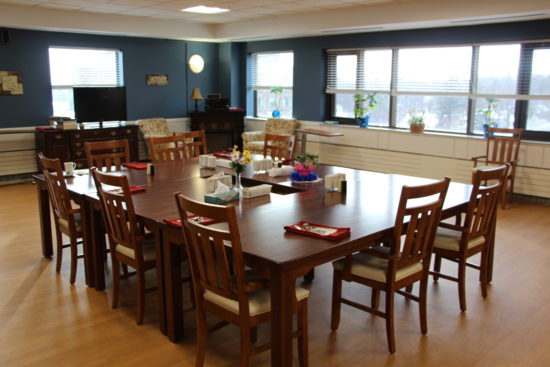
Here’s my latest article on McKnight’s Long-Term Care News:

In 2014, I wrote, “I finally visit a Green House (and it blows my mind).” The Green House is designed with a spacious common area, private bedrooms and showers, unobtrusive medical items and universal workers practicing person-centered care. The model shows that it’s possible to make dramatic lifestyle improvements in long-term care.
It seemed that Green Houses were the answer, if only there weren’t so many traditional facilities already in place. Traditional nursing homes can participate in culture change programs with great success if their leadership is committed to the philosophy through the transition period and beyond. They can retrain staff, add plants and pets and remove nursing stations, but the standard long hallways have remained – until now.
Last week I had the opportunity to speak with Rebecca Priest, LNHA, LMSW, Vice President of Skilled Services, at St. John’s Home in Rochester, NY. She’s presiding over one of the most exciting changes in LTC to come down the pike since, well, Green Houses.
St. John’s is taking a conventional nursing home built in the 1960’s with 32 beds to a hall and turning it into 22 small homes modeled after the Green House Project. Each floor is being systematically transformed into homelike environments with a large space for cooking, dining and socializing and universal workers called “Shahbazim” who are central to the model’s success.
Rather than having aides, housekeepers and laundry workers, the Shahbazim do it all. “The Shahbaz role,” Priest says, “is highly skilled and not for everyone. Shahbazim need to collaborate and be part of a highly sophisticated work team.”
Cross-training staff and flattening the work hierarchy reduces the likelihood that workers will find themselves in “systematically disempowered situations where they are set up to fail.” As a resident I knew used to say, “Amen to that!”
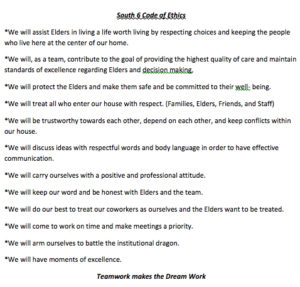
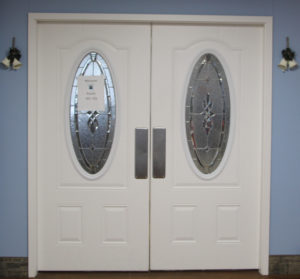
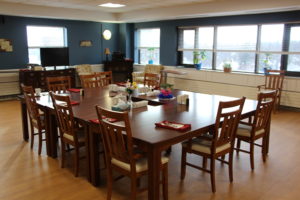

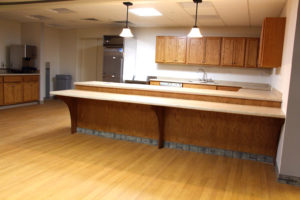
Posted by Dr. El - October 12, 2017 - Customer service, McKnight's Long-Term Care News, Resident care
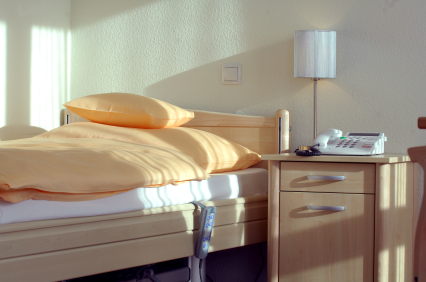
Here’s my latest article on McKnight’s Long-Term Care News:

Perhaps you’ve heard about the administrator who spent a week as a resident in his long-term care facility. After being roused from sleep daily to receive medications that could have been dispensed later in the day, he banned his physicians from unnecessarily prescribing meds during night hours.
That’s an excellent way of attending to sleep hygiene, an important and often overlooked aspect of wellbeing for residents and staff alike.
Sleep challenges of older adults
By the time residents arrive at our doors, their sleep is likely to be affected by influences such as illness and pain. In addition, there are changes in circadian rhythms as people age, leading to increased wakefulness earlier in the morning and fatigue earlier in the evening, according to an article in this month’s American Psychological Association’s Monitor on Psychology.
While we can’t alter some of these factors, as care providers we can become more attuned to the importance of sleep for our residents and train our teams to create environments that are more conducive to slumber.
Impact on care
Poor sleep is associated with cognitive and physical deficits. It can impair residents’ ability to participate in rehab and negatively affect their moods and their interactions with others, including the staff members there to help them (whose job is hard enough).
Residents who can’t sleep through the night due to elements within the control of the facility are not happy with this situation. They’re less satisfied with their stays and therefore less likely to recommend the facility to their friends and neighbors.
As illuminating as it would be, you needn’t sleep in your facility for a week to find out which staff training and policies will remedy the problem. The residents have told me what keeps them up at night and I’ve outlined a “sleep hygiene” training program based on that.
For the entire article, visit:
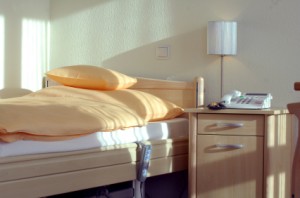
Posted by Dr. El - September 28, 2017 - Anecdotes, Business Strategies, Communication, Customer service, McKnight's Long-Term Care News, Resident care, Stress/Crisis management

Here’s my latest article on McKnight’s Long-Term Care News:

Both of my mothers-in-law live in long-term care communities in Florida. (I’ll keep the backstory about having two MILs a mystery.)
One MIL lives in a place that was excellent about how they communicated with family members before, during and after Hurricane Irma. The other MIL’s facility handled that aspect of care poorly.
At Bentley Village in Naples on the southwest coast of Florida, all 800 residents of the CCRC were evacuated in advance of the storm, even when everyone thought the hurricane was heading toward the East Coast. While not every organization can afford to evacuate their residents to plush hotels, all of them can afford to do what Bentley did next.
At the top of the home page of its website they placed a bright red banner instructing site visitors to click upon it for more information on Hurricane Irma. The following page contains continually updated reports on the progress the management is making toward assessing and repairing the damage to their homes, as well as an estimate of how long the process will take. A typical entry contains the date and time of the posting, the work that’s been done and what has yet to be accomplished.
They recently added photographs of the damage to the community. The photos clearly show even those most eager to return to their homes why they must wait.
In addition, there’s a list of locations where people are sheltering since residents from skilled nursing, assisted living and independent living were sent to different locales. A pet-friendly hotel was selected for independent living residents with animals.
When I discovered my MIL’s cell phone wasn’t working, I checked the website, got the phone number of the hotel where she was staying and was immediately connected to her room. She claimed they were “having a ball.”
Very reassuring.
For the entire article, visit:

Posted by Dr. El - August 31, 2017 - Communication, Customer service, McKnight's Long-Term Care News, Resident care

Here’s my latest article on McKnight’s Long-Term Care News:

By now it’s likely that you, your staff, the residents and their families have seen the incredibly disturbing photo of assisted living residents in Dickinson, TX, sitting in waist-high floodwaters.
Thankfully, all the older women in the picture have been rescued, but that image and others of the flood are undoubtedly causing concern in your community.
Vulnerable residents with no ability to remove themselves from similar situations may be experiencing anxiety, nightmares and/or agitation after seeing their peers immersed in water. Worried family members will want to know that their loved ones are safe from comparable disasters.
Staff members may be wondering what crisis procedures the facility has in place and if they’re sufficiently prepared to carry them out should the need arise (especially with their own families to worry about in an emergency).
Reassurance required
Just as the nation turns to its leaders for reassurance during difficult times, the members of your community will look to you to calm their fears. Now is the time to write a memo to your staff, post a notice in the lobby and add an article to the organization’s newsletter assuring people that there are plans in place for emergencies and that steps have been taken to ensure the safety of the elders entrusted to your care.
Review emergency plans
Review policies and procedures and train staff so that they feel comfortable carrying out these plans. Coordinate with other long-term care facilities so that there is reciprocity of staff and beds in emergency situations.

Posted by Dr. El - August 19, 2017 - Customer service, McKnight's Long-Term Care News, Resident care

Here’s my latest article on McKnight’s Long-Term Care News:

Falls: A closer look
Part of my job as a geropsychologist is to conduct reviews of falls with my patients after they occur.
Through discussion with the resident, I analyze what happened and assess how they’re doing after what can be a traumatic event. Together, we identify ways they can prevent future falls.
This exercise can be very revealing not only about the particulars of a situation but also about why falls occur in general.
The trauma of falls
Falls can be traumatic for a number of reasons. Sometimes an individual is badly hurt in the event, leading to a hospitalization and/or a decline in their physical and mental condition.
Occasionally, a person isn’t found immediately, resulting in a period of time on the floor in pain with negative thoughts about themselves, staff, the facility and life in general. A spill can also trigger thoughts about similar past distressing episodes, such as a reminder of a fall at home that precipitated hospitalization and placement.
In addition, falls can decrease residents’ confidence in their physical abilities, leading them to become overly cautious in rehab and resulting in increased physical dependence.
Why residents fall
There are many reasons that people fall, including forgetting their inability to walk, dizziness due to medication side effects, pain and restlessness.
This 2014 article in Managed Healthcare Connect provides excellent examples of how to conduct a thorough “root cause analysis” and a discussion of many of the elements that contribute to falls and how to address them.
Falls are typically multifactorial, but my own experience with residents over the years — bearing in mind that I speak only with residents who are cognitively intact and able to benefit from psychological services — suggests one major cause of falls in this cohort: not getting help in a timely fashion.
For the entire article, visit:

Posted by Dr. El - July 6, 2017 - Business Strategies, Customer service, McKnight's Long-Term Care News, Motivating staff, Resident care

Here’s my latest article on McKnight’s Long-Term Care News:

The team huddled around the nursing station talking in panicked whispers after the management meeting ended.
“How do they expect us to do that?” a young nurse wondered.
“Yeah,” an aide replied, “we’re stretched thin enough already!”
A more experienced worker piped up. “Don’t worry,” he said bluntly. “I’ve seen these ideas come and go. It’ll never happen.”
There was a collective sigh of relief and everybody went back to business as usual.
The scenario above illustrates some of the many ways organizations are resistant to change.
In this situation, the new procedure is viewed as a temporary fad not worth investing time and energy. The workers haven’t been consulted for their input prior to implementation, they fear that they won’t be able to handle the work and the benefits of doing so aren’t clear. In addition, the employees don’t trust their management to guide them through the process of change.
Think of how hard it is to adjust our own routines and then multiply that by, say, every employee, resident and family member. Then cube that number.
Speaking of adjusting personal routines, a few months ago I wrote that I was going to try to meditate daily this year. I haven’t.
Consider trying to make changes in the context of family life, such as going for a walk after dinner (a good idea that never happened) or eating healthy food (I do, she does, he doesn’t). Pushback and inertia can make it difficult for even the most well-intentioned modifications to take hold.
This is why it’s necessary to have a guide along the way for changes to take hold, whether it’s a friend to meet you at the gym or the Pioneer Network to help your organization navigate through the culture change process.
Full disclosure: While I don’t get paid to say this, as a psychologist I find that culture change principles are better for the mental health of the residents, staff and families. As a change agent, I know how important it is to enlist an agent of change.
For the entire article, visit:

Posted by Dr. El - June 8, 2017 - Communication, End of life, McKnight's Long-Term Care News, Personal Reflections, Resident care, Stress/Crisis management, Transitions in care

Here’s my latest article on McKnight’s Long-Term Care News:

I waited outside the room until the rehab therapists finished talking to Jim, who’d been admitted to the nursing home the night before. I read over the basic info on his face sheet before my consult. Jim was an 87-year old widower with a long list of diagnoses, some very serious.
After a moment, the rehab people left and I sat across from him and introduced myself and explained my role as the psychologist.
“How are you handling all of this stress?” I asked.
“I’m dying,” he replied.
“You don’t think you’ve got much time left?”
“No.”
“Does that upset you?”
“No, not particularly.”
He seemed quite calm.
“Are you sleeping okay? Eating okay?” I proceeded to ask him all the questions I’m supposed to ask patients I meet for the first time. “What kind of work did you do?”
He quietly answered them all. After a while there was a knock on the door and his physician poked her head into the room. “Just give me a minute. I’ll finish up,” I assured her, and turned back to Jim.
“It’s one of us right after the other, isn’t it?” I commented. “Let’s stop here today and I’ll come back next week to see how you’re doing.”
He gave me a funny look and half-shrugged. The doctor knocked again and I rose to leave.
It wasn’t until I returned to work the following week, when I learned Jim had died, that I realized his look meant, “I told you. I’m dying. I won’t be here next week.”
In hindsight, I wished I’d asked Jim more specifically what he meant when he said he was dying. People sometimes make remarks like that to me in their first few days in the nursing home without meaning that they’re in the active dying process. If I’d realized I wouldn’t have more time with Jim, I would have abandoned my standard questions and focused more on being present with him.
I was even more distressed that Jim had spent his last day fielding interviews from well-meaning staff members determined to provide good care. He was patient and kind about it. I’m guessing he was a really pleasant man, maybe too nice for his own good. That might have been something we could have worked on in psychotherapy.
If I knew I was dying, I wouldn’t want to spend my last day answering the questions of strangers trying to provide services I knew I wouldn’t be around to receive. I hope I’d be more assertive than Jim about refusing care, but there must be a way to offer a better experience for a dying person than having to rely on their level of assertiveness when ill and faced with medical routines. Perhaps we could establish a “last day” protocol.
For the entire article, visit:

Posted by Dr. El - November 10, 2016 - Communication, Depression/Mental illness/Substance Abuse, McKnight's Long-Term Care News, Resident care, Role of psychologists, Stress/Crisis management

Here’s my latest article on McKnight’s Long-Term Care News:

In preparing for a webinar on suicide prevention, I came across startling statistics about suicide rates among older adults. Despite the concern we often hear about teen suicide, the rate for elders is even higher.
While older adults make up 12% of the U.S. population, they account for 18% of all suicide deaths. In 2014, the highest suicide rate in the U.S. population (19.3 per 100,000 people) was among people 85 years or older.
In addition, elder suicide may be under reported by 40% or more. Not counted are “silent suicides,” like deaths from overdoses, self-starvation or dehydration, and “accidents.”
Training staff to assess suicide
Given its prevalence, it’s important for long-term care staff members to know how to recognize and address suicidal thinking and behaviors.
As a psychologist who’s been assessing suicidality since my teen years as a peer counselor in college, I feel comfortable with the process. Most facility staff members, however, haven’t had extensive training and are understandably anxious about an issue that’s likely to be out of their area of expertise. This can lead to over-caution, such as unnecessary one-to-one observation, or to missing signs of distress.
Staff training programs should educate team members about factors increasing the likelihood of depression and thoughts of suicide. Many of these influences are prevalent in our elderly population, such as physical illness, pain, functional impairment, losses and social disconnectedness.
Make use of consulting psychologists by referring residents for evaluation after losses and a decline in condition such as a downgrade in diet from chopped to pureed food, a limb loss, a move from a wheelchair to a reclining chair or a death in the family.
Team communication and support
Virtually all workers know it’s necessary to inform the charge nurse and other personnel about direct statements such as “I want to kill myself,” but staff members should be trained to look for other warning signs of potential suicide, which include changes in grooming, loss of interest in previously appealing activities, giving away possessions and making statements like, “I won’t be needing any more appointments.”
For the entire article, visit:

Posted by Dr. El - August 2, 2016 - Customer service, For Fun, Inspiration, McKnight's Long-Term Care News, Resident care, Technology, Tips for gifts, visits

Here’s my latest article on McKnight’s Long-Term Care News:

![]()
My mother has a knack for taking something awkward and, as she puts it, “turning it into a feature.”
For example, the previous owners of our family home placed the living room couch in front of a protruding radiator so that the sofa was oddly and obviously a foot away from the wall. By contrast, my mother had shelves installed above the radiator so that it became a pleasant focal point for books, photos and the stereo system.
I follow this line of thought with regard to the need for assistive devices such as canes, walkers, and eyeglasses. It’s possible to convert something unappealing yet necessary into an item that bestows confidence, evinces a sense of humor or becomes more useful.
Turning assistive devices into a feature creates a psychological shift for the wearer. It gives residents an element of control over mostly uncontrollable circumstances and allows them to retain their personal style in a situation that tends to strip them of their uniqueness despite our best efforts.
An organization providing the opportunity to purchase or design desirable devices can generate a change in their culture. Seeing residents sporting colorful walkers or personalized wheelchairs rather than standard equipment sends a message of individualized care and a zest for life despite disability.
In the spirit of giving your residents an emotional boost and taking the sting out of the need for assistive devices, your organization might try some of the following ideas (found through my handy search engine):
• Residents can purchase sophisticated walking canes featuring fancy handles or colorful shafts with a wide selection of items under $50. I know many residents who would find that an excellent use of their Personal Needs Allowance (PNA).
• Another company features a colorful range of walking canes for about $40 each. Choices include floral motifs, Irish themes, US military and biker inspired designs.
• With PNA funds being as limited as they are, a decorating event is a great addition to the recreation calendar. Help residents embellish canes or create personalized walker or wheelchair bags to carry their belongings using colorful duct tape, Velcro and other supplies, or sew a handy cup holder.
For the entire article, visit:



























